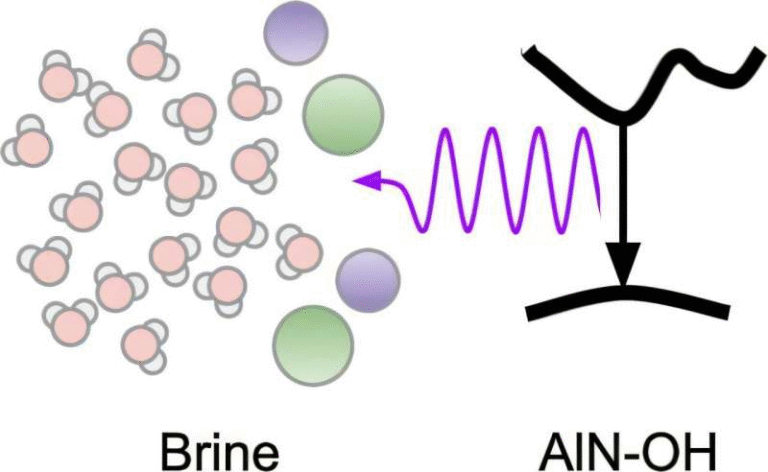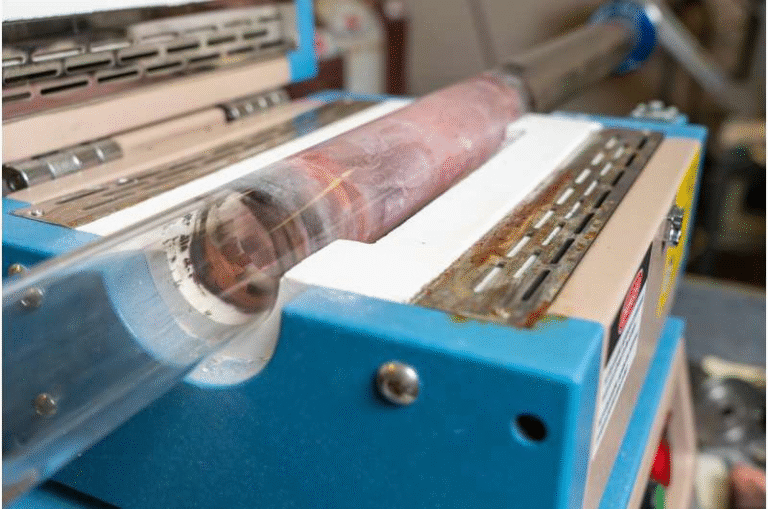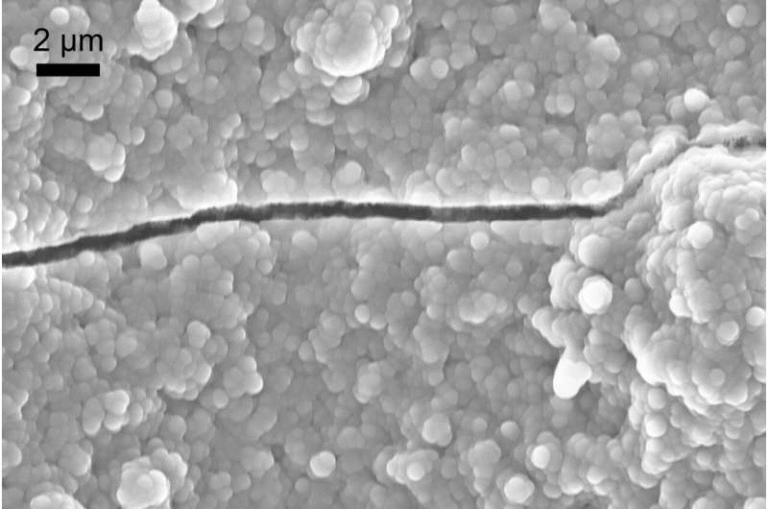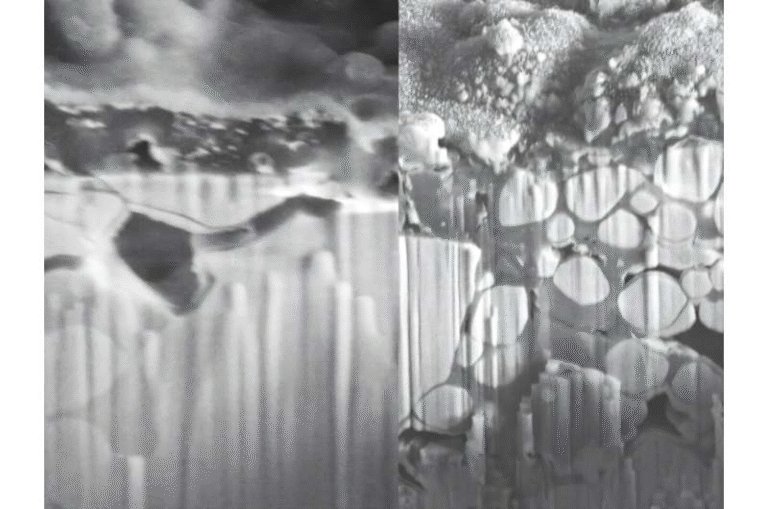CHESS Thermoelectric Films Could Make Refrigerators Twice as Efficient and Whisper-Quiet
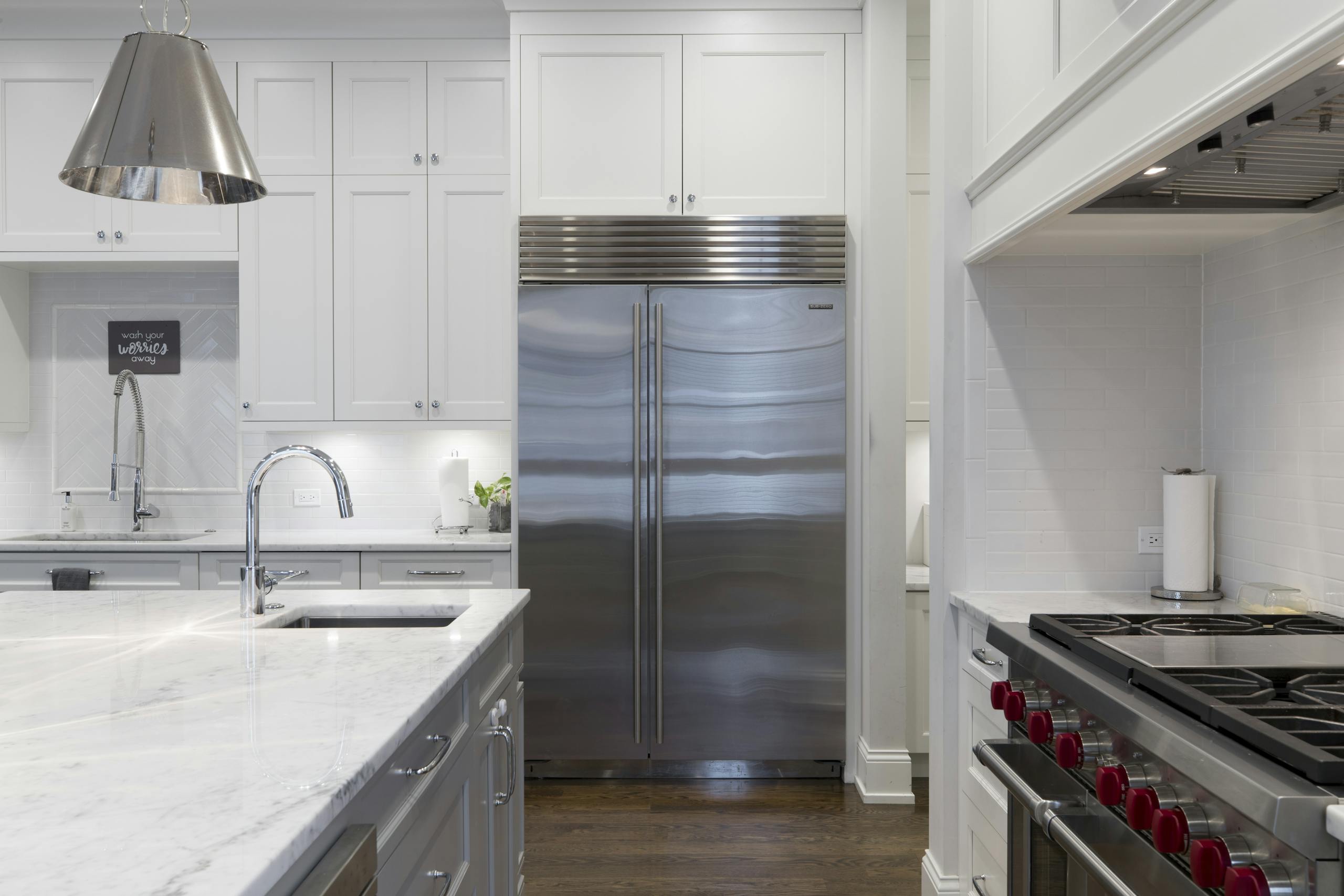
Scientists at the Johns Hopkins Applied Physics Laboratory (APL), working alongside engineers from Samsung Research, have introduced a technology that may reshape refrigeration and cooling as we know it. Their creation, called CHESS (Controlled Hierarchically Engineered Superlattice Structures), is a nano-engineered thin-film thermoelectric material that has shown to nearly double the efficiency of conventional thermoelectric systems.
This advance, published in Nature Communications in May 2025, doesn’t just promise quieter refrigerators. It also hints at a future where energy-efficient, compressor-free cooling could extend into HVAC systems, electronics, prosthetics, and even spacecraft energy-harvesting systems.
Let’s go through all the details of this innovation, what it means for cooling technology, and why it matters.
What Exactly Is CHESS?
CHESS stands for Controlled Hierarchically Engineered Superlattice Structures. That might sound complicated, but in practice, it’s a nano-engineered thin-film thermoelectric material designed to improve how electricity can directly transfer heat.
Unlike traditional refrigerators that rely on mechanical compressors and chemical refrigerants, CHESS is a solid-state cooling system. It transfers heat using electrons inside semiconductor materials, eliminating moving parts, chemical coolants, and noisy machinery.
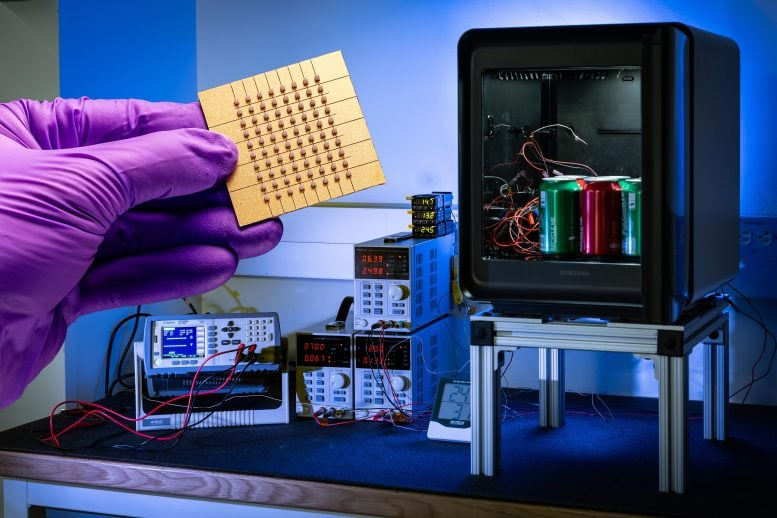
These thin films are extremely compact. Each refrigeration unit uses only about 0.003 cubic centimeters of material—roughly the size of a grain of sand. Despite the small amount of material, the cooling impact is significant.
The materials are produced using metal-organic chemical vapor deposition (MOCVD). This process is already widely used in manufacturing LED lights and solar cells, which means it’s scalable, cost-effective, and suitable for high-volume production.
Performance Gains in Numbers
APL and Samsung didn’t just stop at theory. They tested CHESS under real-world conditions.
- At the material level, CHESS thin films achieved nearly a 100% improvement in thermoelectric performance compared to bulk thermoelectric materials at room temperature (around 25 °C or 77 °F).
- At the module level, where these materials were used in actual cooling devices, efficiency improved by about 75% over standard devices.
- At the system level, integrated into a working refrigerator test system, CHESS modules improved overall efficiency by about 70%.
These numbers are particularly striking because traditional thermoelectric materials have struggled for years with low efficiency, limiting their use to small devices like mini-fridges. CHESS essentially breaks through the performance wall that has kept thermoelectric cooling from going mainstream.
Why This Matters
The demand for smaller, quieter, and more sustainable cooling solutions is growing rapidly. Refrigerators, air conditioners, and data center cooling systems account for a huge chunk of global energy consumption.
- Conventional compressors are effective, but they’re bulky, energy-hungry, and use refrigerants that can harm the environment.
- Thermoelectric cooling offers compactness and silence, but until now, it simply wasn’t efficient enough for large-scale use.
CHESS thin films could be the turning point, bringing us closer to refrigerators and HVAC systems that are not only greener but also completely silent.
Built to Scale
One of the most important aspects of CHESS technology is its scalability. Because the films are grown using MOCVD, the same method already used for mass production in electronics and photonics, it’s realistic to imagine scaling this technology for consumer markets.
APL researchers have drawn a comparison to lithium-ion batteries. Just as those grew from powering small devices like phones to powering electric vehicles, CHESS could grow from compact cooling systems to large-scale HVAC applications.
The tiny material requirements (grain-of-sand sized volumes per unit) also mean manufacturing could be more resource-efficient and less dependent on critical supply chains.
Applications Beyond Refrigeration
The innovation is not limited to just making refrigerators more efficient. CHESS thin films have several promising applications:
- Prosthetics and wearable devices: Because these materials can be thin and flexible, they could be used for noninvasive cooling therapies in medical devices.
- Energy harvesting: CHESS materials can also convert temperature differences directly into electricity. For example, they could harvest body heat to power wearable electronics or sensors.
- Electronics cooling: As processors, GPUs, and other components get hotter, compact thermoelectric cooling could provide silent, chip-integrated thermal management.
- Space and defense technologies: Originally designed with national security in mind, CHESS materials are robust and versatile enough for spacecraft and advanced sensor systems.
APL is already planning larger-scale demonstrations, including freezers and building-level HVAC systems. There are also plans to integrate AI-driven optimization, which would manage energy use across distributed cooling systems.
Recognition and Partnerships
This innovation has not gone unnoticed. In 2023, CHESS was recognized with an R&D 100 award, highlighting its global impact potential. By 2025, Samsung Research was working with APL to validate the technology in commercial refrigeration systems, modeling realistic heat loads and thermal resistance parameters to ensure its performance held up under everyday use.
How Does Thermoelectric Cooling Work?
To understand why CHESS is a leap forward, it’s helpful to know how thermoelectric cooling works.
- It relies on the Peltier effect, where an electric current is used to transfer heat between two materials.
- Standard thermoelectric devices already exist—like those tiny mini-fridges you might plug into a car.
- The issue is that they’ve traditionally had low coefficients of performance (CoP), meaning they wasted too much energy compared to what they cooled.
By engineering materials at the nano-scale into layered superlattice structures, APL essentially enhanced how efficiently electrons can carry heat. This hierarchical engineering is what allows CHESS to outperform bulk thermoelectric materials so dramatically.
Challenges Ahead
While CHESS is a major step forward, there are still some challenges:
- Scaling up: Moving from lab prototypes to full household refrigerators or commercial HVAC systems will require further development, especially for heat dissipation and system integration.
- Durability and reliability: Long-term stability under thermal cycling, humidity, and mechanical stress needs to be validated.
- Commercial adoption: Even if the technology is superior, industries built around compressor-based systems may take time to adapt.
Despite these hurdles, the path forward looks promising given the strong partnerships with industry players like Samsung and the established scalability of MOCVD production.
Broader Impact on Energy and Environment
Cooling is a major driver of global energy demand. According to the International Energy Agency (IEA), cooling and refrigeration consume over 15% of global electricity.
Conventional refrigerants, particularly HFCs (hydrofluorocarbons), are also potent greenhouse gases. Although phase-out efforts are underway, alternatives still carry trade-offs.
A shift toward solid-state cooling with CHESS materials could significantly reduce both energy use and environmental impact, making this a potentially transformative development in the fight against climate change.
Thermoelectrics Beyond Cooling
It’s also worth mentioning that thermoelectric technology isn’t only about refrigeration. It’s a two-way system:
- When electricity is applied, it can cool or heat (Peltier effect).
- When heat is applied, it can generate electricity (Seebeck effect).
This dual nature makes CHESS especially exciting. A single technology platform could handle cooling and energy harvesting, depending on the application. Imagine a prosthetic limb that stays cool during use but also harvests waste heat to power sensors.
Final Thoughts
The development of CHESS thermoelectric thin films is more than a lab curiosity. It represents a practical, scalable, and award-winning approach to making cooling systems twice as efficient, completely silent, and environmentally friendly.
With proven performance gains at material, device, and system levels, and with backing from industrial partners like Samsung, this breakthrough could usher in a new era of refrigeration and cooling technologies.
As research continues, we may soon see refrigerators, air conditioners, and even large-scale HVAC systems that don’t rely on compressors at all—marking a major step toward a sustainable, energy-efficient future.

